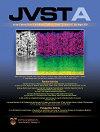增强激光熔覆β-TiNb涂层的生物相容性、力学性能和耐腐蚀性
IF 2.1
3区 材料科学
Q3 MATERIALS SCIENCE, COATINGS & FILMS
引用次数: 0
摘要
β型TiNb生物医用合金因其优异的综合性能而备受关注。然而,它们的实际应用受到相对较差的性能和生物毒性的阻碍。采用激光熔覆的方法在Ti6Al4V (TC4)表面制备TixNb合金涂层,避免了性能与毒性的权衡。讨论了TixNb合金涂层的生物相容性、力学性能和耐蚀性。结果表明:显微组织由β晶粒组成,其周围均匀析出少量α″马氏体相;激光熔覆的快速熔化过程促进了β相的形成,提高了涂层的显微硬度和耐磨性。然而,由于在涂层表面形成的钝化膜的致密化和稳定化,其耐腐蚀性得到了显著提高。得益于合金表面优异的润湿性和Ti和Nb的生物活性位点,MG-63细胞在细胞实验中以纺锤形附着在涂层表面并快速增殖,表明涂层比TC4具有更好的生物相容性。因此,所获得的TixNb激光熔覆涂层具有优异的力学性能和生物相容性,在骨科生物材料领域具有广泛的应用前景。本文章由计算机程序翻译,如有差异,请以英文原文为准。
Enhancing biocompatibility, mechanical properties, and corrosion resistance of laser cladding β-TiNb coatings
β-type TiNb biomedical alloys have received quite significant attention rooted in their excellent comprehensive performance. Nevertheless, their practical application is hampered by relatively poor performance and biological toxicity. Herein, TixNb alloy coatings were fabricated on the surface of Ti6Al4V (TC4) by laser cladding to evade the property-toxicity trade-off. Biocompatibility and mechanical properties, as well as the corrosion resistance of the TixNb alloy coatings, were discussed. The results show that the microstructure is composed of β grains and a small amount of the α″ martensite phase uniformly precipitated around them. The rapid melting process of laser cladding promotes the formation of the β phase, which improves the microhardness and wear resistance of the coating. However, the corrosion resistance was significantly improved due to the formation of the densification and stabilization of the passive films formed on the coating’s surface. Benefiting from the superior wettability and the biologically active sites of Ti and Nb on the alloy surface, MG-63 cells adhered to the coating’s surfaces in spindle shape and proliferated rapidly in cell experiments, denoting that the coatings have better biocompatibility than TC4. Hereby, the obtained TixNb laser cladding coatings with excellent mechanical properties and biocompatibility have extensive application prospects in the field of orthopedic biomaterials.
求助全文
通过发布文献求助,成功后即可免费获取论文全文。
去求助
来源期刊

Journal of Vacuum Science & Technology A
工程技术-材料科学:膜
CiteScore
5.10
自引率
10.30%
发文量
247
审稿时长
2.1 months
期刊介绍:
Journal of Vacuum Science & Technology A publishes reports of original research, letters, and review articles that focus on fundamental scientific understanding of interfaces, surfaces, plasmas and thin films and on using this understanding to advance the state-of-the-art in various technological applications.
 求助内容:
求助内容: 应助结果提醒方式:
应助结果提醒方式:


